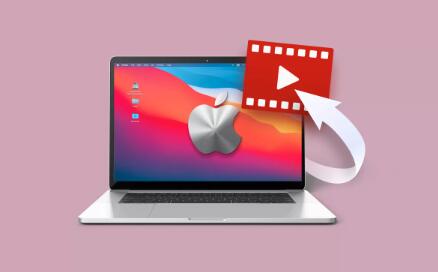This tutorial aims to provide a detailed approach to finding deleted porn videos, covering various methods from basic recovery options to advanced software tools. Additionally, we’ll address the legal and ethical considerations involved in accessing adult content, ensuring that users are informed about responsible practices.
File Deletion
When a video file is deleted, it isn’t necessarily removed from the device immediately. Instead, the operating system typically marks the space as available for new data, making recovery possible until that space is overwritten. Here’s a deeper look into the deletion process:
Types of Deletion
Soft Deletion: This occurs when a file is sent to the recycle bin or trash. The file can be easily restored from there.
Hard Deletion: This is when the file is permanently deleted from the system, bypassing the recycle bin. Recovery becomes more challenging in this case.

Data Storage Systems
Understanding how files are stored on your device can aid in recovery. Hard drives, SSDs, and cloud storage have different mechanisms for file deletion and recovery.
Recovery Window
The chances of successfully recovering a deleted video diminish over time, especially if new data is written to the same storage space. It’s crucial to act quickly when attempting recovery.
Methods to Recover Deleted Porn Videos
1. Check the Recycle Bin or Trash
Steps to Recover:
Open the Recycle Bin (Windows) or Trash (Mac).
Look for the deleted video file.
Right-click the file and select “Restore” to recover it to its original location.
2. Use File Recovery Software
Panda Assistant also features a preview function, enabling users to view files before recovery, ensuring they can select exactly what they want to restore. It is compatible with multiple operating systems, enhancing its versatility for various users.
Ideal for addressing issues like accidental deletions, formatting errors, and system crashes, Panda Assistant serves as a reliable solution for data management and recovery. With regular updates and dedicated customer support, it continually adapts to meet the evolving demands of the digital landscape, ensuring users can safeguard their valuable data effectively.
3. Restore from Backups
Importance of Backups: Regular backups can save you time and effort in recovery.
Cloud Storage Services: Services like Google Drive, Dropbox, or iCloud may have backups of your files.
Local Backups: If you use software like Windows File History or Time Machine on Mac, check these for saved versions of your files.
Steps to Restore:
Access your backup service or application.
Navigate to the date when the video was last available.
Restore the file to its original location.
4. Check Temporary Files
Overview: Sometimes, video players create temporary files during playback.
Finding Temporary Files:
Navigate to the folder where the video player stores temporary files (often found in the installation directory or user profile).
Look for files with extensions like .tmp or .cache and attempt to rename them to the appropriate video format.
5. Use Command Prompt (Windows)
Overview: For more advanced users, the Command Prompt can be a powerful tool for recovery.
Steps:
Open Command Prompt as an administrator.
Type chkdsk X: /f (replace X with the drive letter where the video was deleted).
After the check is complete, type attrib -h -r -s /s /d X:*.* to attempt to recover lost files.
6. Professional Data Recovery Services
When to Consider: If the video is critically important and other methods fail, professional services can be a last resort.
How They Work: These services involve sending your storage device to specialists who use advanced techniques to recover lost data.
Cost Considerations: Professional services can be expensive, so weigh the importance of the data against the cost.
Legal and Ethical Considerations
Recovering deleted adult content comes with important legal and ethical considerations:
Legality of Content: Ensure that the content is legal and consensual. Accessing illegal material can have serious legal repercussions.
Copyright Issues: Respect copyright laws. If the video was obtained illegally or without permission, recovering and distributing it may violate copyright laws.
Privacy Concerns: Be mindful of the privacy of individuals in the content. Sharing or distributing videos without consent is unethical and potentially illegal.
Responsible Usage: Use recovered content responsibly and in accordance with local laws and regulations.
Tips for Preventing Future Loss
Regular Backups: Consistently back up your files using cloud storage or external hard drives to prevent future data loss.
Use a File Recovery Tool Preemptively: Some software can create backups or snapshots of your files periodically, making recovery easier.
Organize Files: Keeping files organized can help avoid accidental deletions. Create separate folders for different types of content.
Practice Caution: Be mindful when deleting files. Double-check before permanently removing content from your device.
Educate Yourself: Stay informed about new recovery technologies and methods to enhance your ability to recover lost files in the future.
About us and this blog
Panda Assistant is built on the latest data recovery algorithms, ensuring that no file is too damaged, too lost, or too corrupted to be recovered.
Request a free quote
We believe that data recovery shouldn’t be a daunting task. That’s why we’ve designed Panda Assistant to be as easy to use as it is powerful. With a few clicks, you can initiate a scan, preview recoverable files, and restore your data all within a matter of minutes.
Subscribe to our newsletter!
More from our blog
See all postsRecent Posts
- Dell backup and recovery windows 11 2025-04-21
- Dell os recovery tool keeps crashing 2025-04-21
- Raw hdd data recovery 2025-04-21

 Try lt Free
Try lt Free Recovery success rate of up to
Recovery success rate of up to









